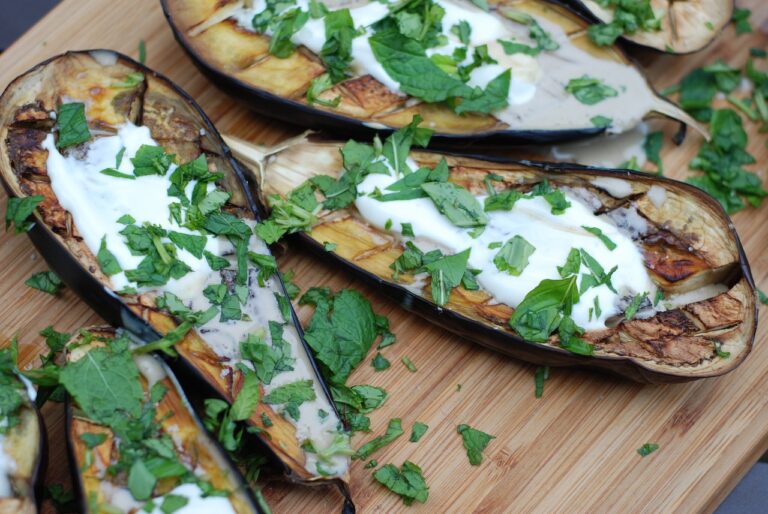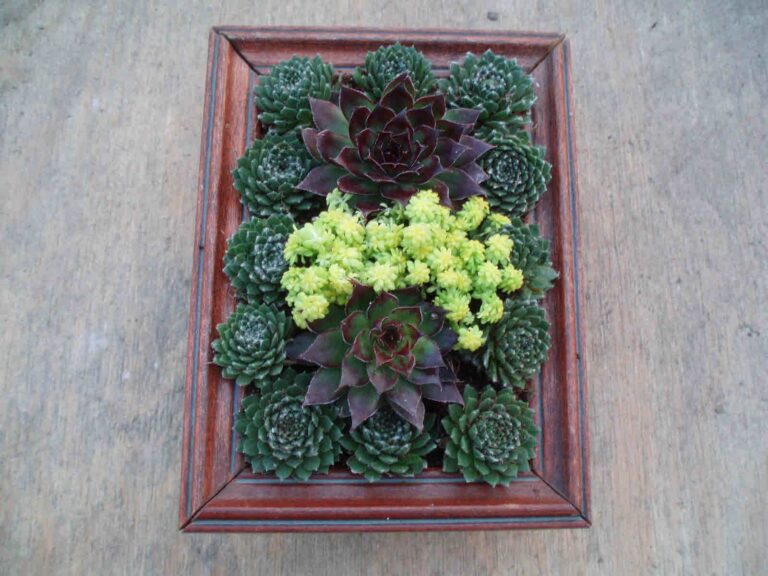A Colorful Winter Garden
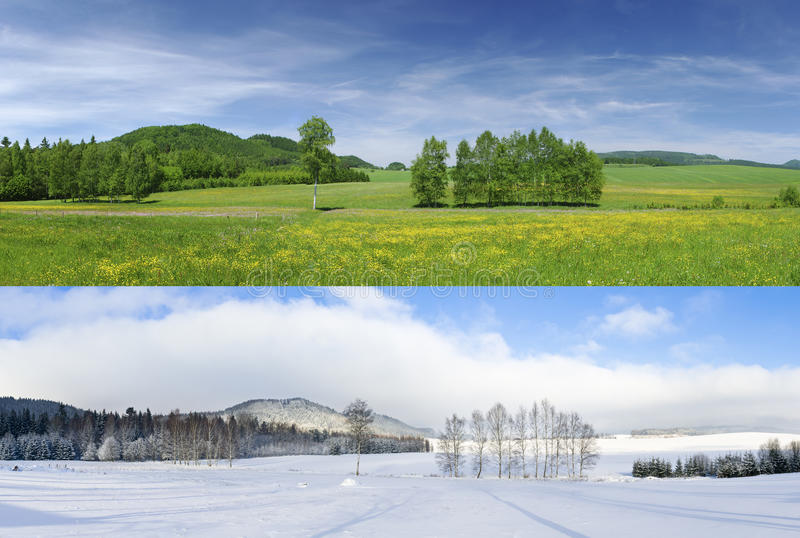
Can we have a winter garden? Gardeners seem to be under the impression that we must close Nature’s book at the end of the summer season. That gardening must remain closed until the spring of next year. Spring, then invites us to perusal its attractive pages again. In other words, we are not expected to get much pleasure from the garden for six months of the year. I disagree. There is no good reason why the home-grounds should not be attractive all year round. We can plant for winter effects as well as summer.
Cold White Winter Beauty
It is true, we cannot have flowers in winter, but we can secure color effects with little trouble. These color effects will, to a considerable extent, offset the lack of colorful blooms. Without these, the winter landscape is cold, though beautiful, and to most people, it seems dreary and monotonous in its chill whiteness. But to those who have “the seeing eye,” there are always elements of wonderful beauty in it. In fact, there are ample plants to give our winter garden the touches of brightness. These can make it almost as attractive as it is in June.
Contrast a Summer Garden and Winter Garden
By studying the illustrations above, the winter garden has many attractive features that the summer garden cannot boast of. These illustrations are summer and winter views of the same spot, taken from one of our public parks. The summer view shows a wealth of foliage and blooms. It is one of Nature’s beauty spots that we never tire of. But the winter garden has a suggestion of breadth and distance that adds wonderfully to the charm of the scene. It is brought out by the naked branches against the sky, and glimpses of delightful vistas farther on.
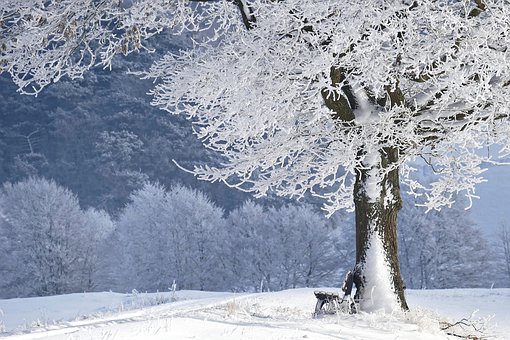
Winter Gardens Love The Backdrop of Evergreens
Some vistas are entirely hidden by the foliage that interferes with the outlook in the summer picture. Note how the evergreens stand out sharply against the white background,. Every shrub—every branch—is outlined by the snow. It is one of Nature’s etchings. Whatever color there is in the landscape is heightened and emphasized by strong, vivid contrast. There are little touches of exquisite beauty in this picture that cannot be found in the other. Most of us plant a few evergreens around our homes. Sometimes we are fortunate enough to put them where they will prove effective. More often, we put them where they have no chance to display their charms to good effect.

Evergreens do not belong near the house, especially the front yard. Admire them at a distance to soften their coarse layers. You must be far enough away from evergreens to be able to take in their size. Take in the charms of form and color at a glance. We can observe the graceful sweep of their branches against the snow. It fully brings out the strength and richness of color, none of which can be done at close range. A proper and respectful distance brings out every good specimen of evergreen with a great deal of pleasure. But it might bring a great deal more if we place it in the right way. Why not make our evergreens serve as backgrounds to bring out colors. Colors that rival, to some extent, the flowers of summer?
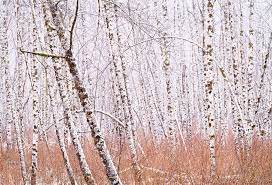
Alders in a Winter Garden
Have you ever taken a tramp along the edge of the woodland in winter, and come suddenly upon a group of Alders? What brightness seems to radiate from their spikes of scarlet berries! The effect is something like that of a flame, so intense it is. It seems to radiate through the winter air with a thrill of positive warmth. So strong an impression upon the eye that you see them long after you have passed them. They photograph themselves there in your mind’s eye.
Why should we not transplant this bit of woodland glory to the winter garden? We could heighten the effect of it by giving it an evergreen as a background? The alders’ scarlet fire, seen against the dark greenery of Spruce or Arbor Vitæ. It would make the winter garden fairly glow with color.
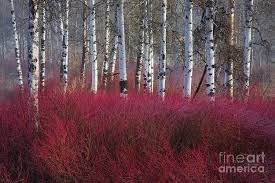
Red Branched Willow or Bittersweet
I have seen the red-branched Willow planted near an evergreen. The contrast of color brought out every branch so keenly that it seemed chiseled from coral. The effect was exquisite. Arrange Celastrus scandens, better known as Bittersweet, where its pendant clusters of red and orange show against evergreens, and produce an effect that is equaled by few flowers. The Berberry is an exceedingly useful shrub with which to work up vivid color effects in winter. It shows attractively among other shrubs, is charming when seen against a drift of snow. But, it is never quite so effective as when its richness of coloring is emphasized by contrast. The somber green of a Spruce or Balsam.

Cranberry—Viburnum opulus—is one of our best berry-bearing shrubs. It holds its crimson fruit well in winter. Planted among—not against—evergreens, it is wonderfully effective because of its tall and stately bushes. Bayberry (Myrica cerifera) is another showy fruit shrub. Its grayish-white berries are thick along its brown branches and stay through the winter. Grow this side by side with the Alder, the effect is very pleasing.
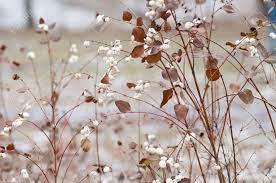
White Berries Like Snowballs
The Snowberry (Symphoricarpus racemosus) has been cultivated for several hundred years in our winter gardens. It probably stands at the head of the list of white-fruited shrubs. Plant this in front of evergreens so the purity of its color is charming. Group it with the red-barked Willow, the Alder, or the Berberry. You secure a contrast that makes the effect strikingly delightful. A symphony in green, scarlet, and white. If to this combination you add the blue of a winter sky or the glow of a winter sunset? Who can say there is not plenty of color in a winter landscape?
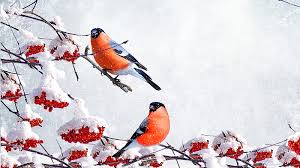
A Feast for Our Feathered Friends
The value of the Mountain Ash as a winter decoration is just beginning to be understood. If it retained its fruit throughout the entire season it would be one of our most valuable of plants. The birds, however, claim its crimson fruit as their special property. Which brings their feathers into play for our nature tapestry. But, it is generally without a berry by Christmas in localities where robins and other berry-eating birds linger. Up to that time, it is exceedingly attractive. Especially, if the Ash grows where it can have the benefit of strong contrast. This brings out the rich color of its great clusters. Because of its tall and stately bearing, it is very effective when planted between evergreens and other bright-colored shrubs.

Blue Berries add Depth
There are many shrubs whose berries are blue, purple, and black. While these are not as showy as those of scarlet and white, they are very attractive. They can be extremely useful in the winter garden. Shrubs should not be neglected. They widen the range of color to such an extent that the monotony of tone in the winter landscape is ineffective. The Ramanas Rose (R. lucida) has very brilliant clusters of crimson fruit which retain their beauty long after the holidays. This shrub is really more attractive in winter than in summer.
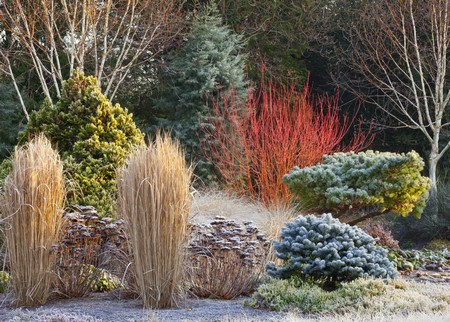
The Rainbow of a Winter Garden
There is a high value on the decorative effect of leafless shrubs. Their branches, whether traced against a background of sky or snow, make embroidery. It has about it a charm that summer cannot equal in delicacy. A Bittersweet, clambering over bush or tree. It displays its many clusters of red and orange against a background of leafless branches. The intense blue of a winter sky shows through the branches. It creates a picture that is brilliant in the extreme. Consider the relative values of the colors composing it. Then, you discover that the charm is not confined to the color of the fruit. It is the delicate tracery of branch and twig, as well.
Winter Gardens only need some planning and research. I came across this chapter in a book from Gutenberg.org and gave it a more modern read with shorter sentences. But, I so much enjoyed the poetry of the writing. These are great suggestions for planting a winter garden. It can bring color to the landscape, feed the wildlife, and a greater appreciation for winter days.
What is your favorite winter plant? Leave a comment in the form below.
